You might have noticed professional golfers carrying multiple wedges in their kits. But what are these wedges? What do they do?
Wedges are essentially the highest-lofted clubs within a golf club set. They are primarily meant for short approach shots or other shots where the player wants the ball to rise and descend sharply.
While wedges are also irons, they are often referred to as their kind of golf club. Their loft angles usually identify them.
Prepare to dive in and learn more about the different kinds of wedges based on their loft and how far each wedge can take a shot.
How Far Do Wedges Go?
Different wedges go up to different distances, depending on the loft and the player’s abilities.
The process of measuring how far you hit your widgets is pretty straightforward.
Find a place where you can walk and collect your golf balls. Then take your wedge and hit ten shots towards a target.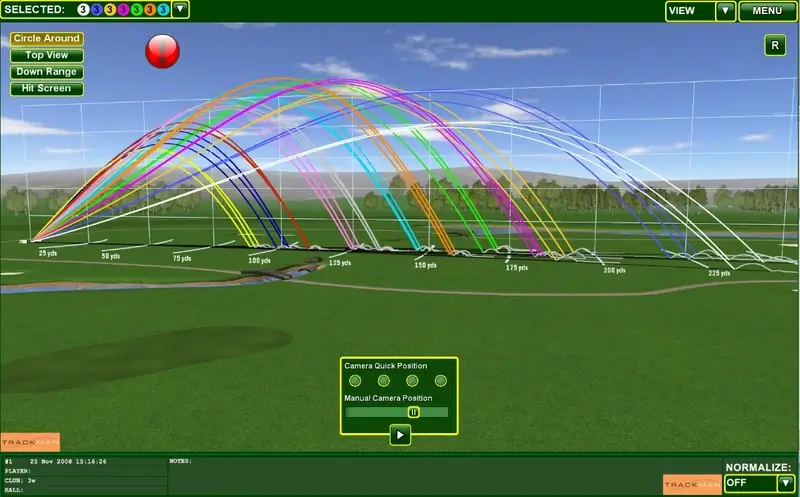
Measure how far you hit each ball. The most accurate and effective way to measure how far your wedge hits is to use a GPS measuring device, a laser rangefinder, or a smartwatch.
However, if you do not own any of these devices, you simply need to pace out the distance to each shot and note down how far you could hit each stroke.
Finally, calculate the average distance you hit with the ten shots. You can repeat this process with all of your wedges to determine how far your wedges go.
Factors Affecting Golf Wedge Distance
Apart from the gender and skill of the golfer, a few other factors also bear influence over the golf wedge distance.
- Loft: All clubs have their own unique loft. In general, higher lofts result in higher ball-flights.
- Weather: Weather conditions have a significant impact on the golf wedge distance. If you hit your shot in the wind, the ball may “balloon” into the air, compromising the length.
- Swing Speed: As a rule of thumb, faster swing speeds mean greater distances. However, the quality of your hit also affects how far you hit the ball.
- Smash Factor: Smash factor refers to the speed of the ball divided by the speed of the club. It relates to the energy transferred from the clubhead to the ball. In general, a higher smash factor indicates better energy transfer.
Golf Wedge Distance Chart
The golf wedge distance for each wedge is not a single figure. It fluctuates across genders and various skill levels.
Let us look at the golf wedge distance chart for the different distances men and women can hit as beginners, average golfers, good players, and excellent golfers with different wedges.
Golf Wedge Distance Chart for Men
| Wedge | Loft | Beginner | Average | Good | Excellent |
| Pitching Wedge | 46 to 50 degrees | 70 yards | 100 yards | 110 yards | 135 yards |
| Gap Wedge | 50 to 52 degrees | 60 yards | 90 yards | 100 yards | 125 yards |
| Sand Wedge | 54 to 56 degrees | 55 yards | 80 yards | 95 yards | 115 yards |
| Lob Wedge | 58 to 60 degrees | 40 yards | 60 yards | 80 yards | 105 yards |
Golf Club Distance Chart for Women
| Wedge | Loft | Beginner | Average | Good | Excellent |
| Pitching Wedge | 46 to 50 degrees | 50 yards | 60 yards | 80 yards | 115 yards |
| Gap Wedge | 50 to 52 degrees | 45 yards | 55 yards | 70 yards | 95 yards |
| Sand Wedge | 54 to 56 degrees | 40 yards | 50 yards | 60 yards | 85 yards |
| Lob Wedge | 58 to 60 degrees | 35 yards | 45 yards | 50 yards | 70 yards |
48 Degree Wedge Distance
Although a 48-degree wedge is ideal for covering long distances, it can hit both long and short distances.
The Callaway Mack Daddy CB Wedge has a wonderful 48 degrees configuration. However, not everyone will hit the same distance.
In general, men can hit a 48 degrees wedge at a distance of 115 yards. On the other hand, women typically hit a distance of 77 yards with a 48 degrees wedge.
The longest distances that can be achieved with a 48 degrees wedge are a little more. For men, the maximum 48-degree wedge distance is 120 yards. However, the maximum possible golf wedge distance is only 80 yards for women using the same wedge.
An important point to note is that the 48-degree wedge is not meant for use in the sand or mud. It is better suited for use on grass surfaces and open areas with only a few trees.
50 Degree Wedge Distance
A 50-degree wedge is also known as a gap wedge. It is a relatively new entry to the wedge series and It essentially bridges the gap between pitching and a sand wedge, which is how it got the name gap wedge.
Ideally, the distance covered by a 50 degrees wedge should be between a pitching wedge and a sand wedge. It should cover a distance of up to 95 yards.
The 50 degree wedge distance can vary based on the following factors:
- Gender of the golfer
- Whether the golfer is a short, mid, or long hitter
- Swinging style of the golfer
Male players can typically cover a distance of 95 yards with a 50 degrees wedge. However, women can cover a significantly lesser distance, just about 62 yards on average.
These wedges are best suited to golfers that would like to cover about 90 yards with their shot. Check out this Harmonized Golf Wedges by Wilson if you’re looking for a great 50 degree wedge.
52 Degree Wedge Distance
52-degree wedges, like the Cleveland Golf CBX 2 Wedge, are ideal for hitting the golf ball higher in the air at a relatively shorter distance.
In general, a 52 degrees wedge can cover a distance of about 85 to 100 yards. On average, the 52-degree wedge distance is 90 yards.
This distance might vary based on the level of expertise of the golfer. A professional golfer will be able to achieve a distance of 100 yards, whereas beginners will only come close to the range of 80 to 85 yards.
A bounce of 8 to 10 degrees is best suited for taking shots with a 52 degrees wedge.
A low bounce will do the job if you’re playing on a firm golf course with heavy sand bankers. However, the opposite conditions are favorable for a high bounce.
54 Degree Wedge Distance
The average 54-degree wedge distance falls between 80 to 110 yards. The golfer’s capabilities and gender influence the distance.
The MG1 Chrome Wedge is a good choice for a 54-degree loft with 11 degrees standard bounce.
What usually happens is that beginners using a 54 degrees wedge hit lesser distances than experienced golfers.
Moreover, women generally cover 15 yeards lesser than male golfers.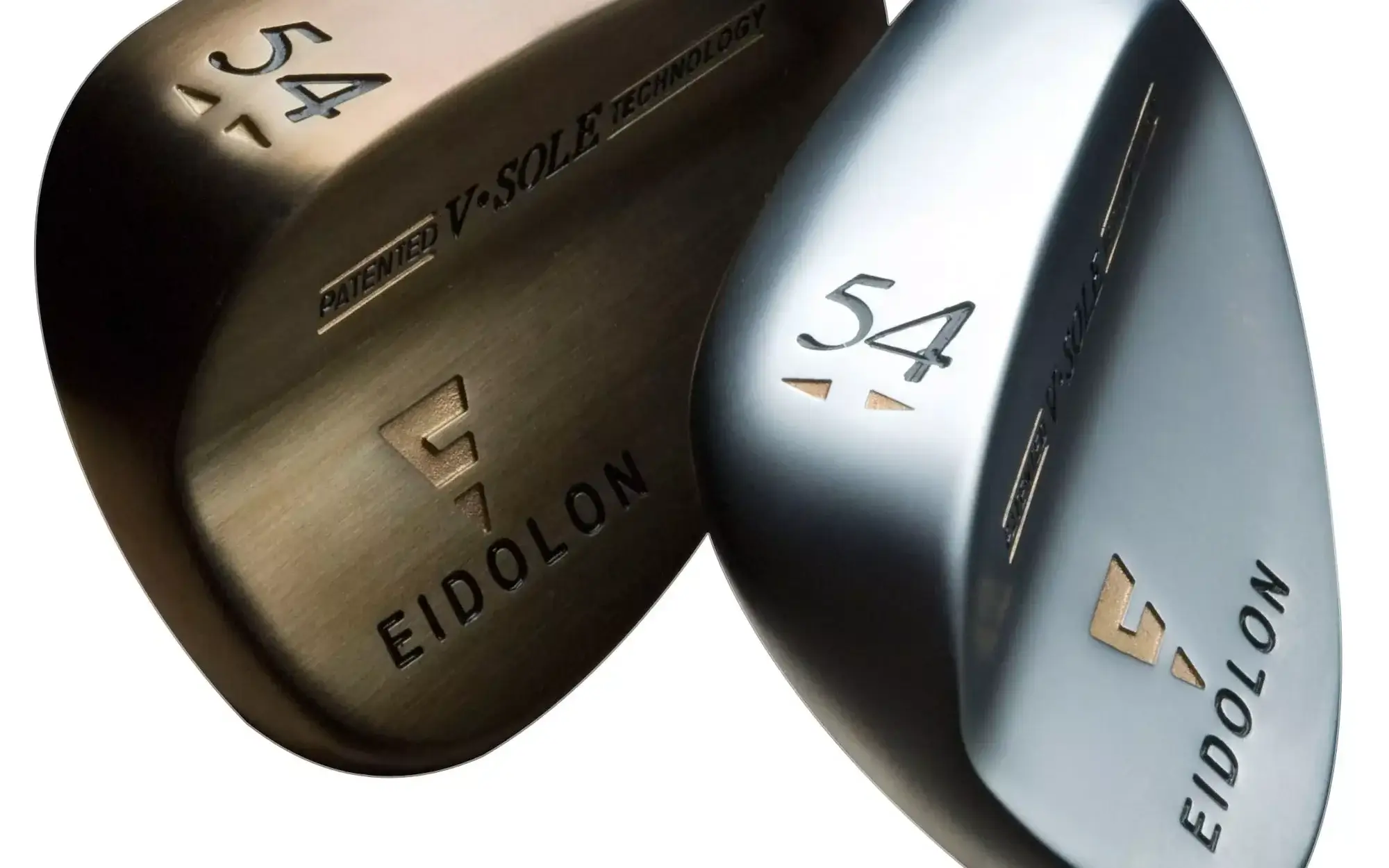
Typically, a male golfer can cover a distance of approximately 85 yards with a 54 degrees wedge. On the other hand, female golfers can cover about 59 yards with the same wedge.
Some golfers have been able to demonstrate above-average performances too. They could cover longer distances with a 54-degree wedge, ranging between 105 to 100 yards, or even as far as 115 to 120 yards.
An amateur golfer can cover about 70 yards with the wedge. Conversely, professionals generally hit more than 100 yards with a 54 degrees wedge, usually between 105 and 120 yards.
56 Degree Wedge Distance
56 degrees wedges, such as the Wilson Staff Model Golf Wedge, are quite handy. They cover a vast distance and are suited for short-game play.
On average, the 56 degrees wedge distance is 75 yards. It comes pretty close to the distance from a sand wedge, which is 80 yards.
The player taking the shot greatly influences the distance. For instance, male golfers usually hit a distance of 78 yards with a 56 degrees wedge.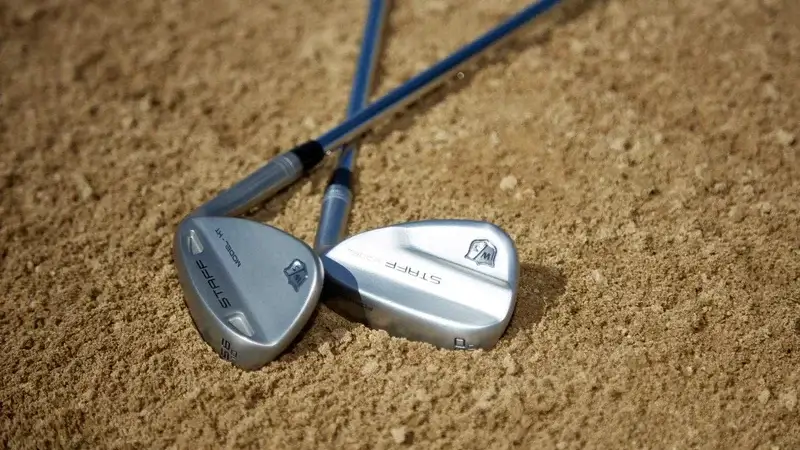
On the other hand, female golfers can hit about 60 yards with the same wedge.
The bounce of a 56 degrees wedge ranges between 11 to 14 degrees. It can vary based on the type of swing and golf course conditions.
An 11 degrees bounce will work best if you plan on chips, delicate, and partial shots. However, a 14 degrees bounce will be better for chipping without pitching around the greens while playing on a soggy course.
58 Degree Wedge Distance
58 degrees wedges are commonly used to get the ball up in the air quickly. The Mizuno T20 Golf Wedge is a good example of such a wedge.
The typical 58-degree wedge distance is 70 yards. However, the range can fluctuate between 50 to 105 yards.
The distance depends largely on the gender and skill of the golfer. Let us see how this differs across different categories of amateur golfers.
| Style | Male Golfers | Female Golfers |
| Short Hitters | 57 yards | 34 yards |
| Mid Hitters | 70 yards | 46 yards |
| Long Hitters | 80 yards | 59 yards |
If you try playing with a smooth swing, you will be able to cover a distance of 85 yards. However, experts can go much further, hitting about 110 to 150 yards with a 58-degree wedge.
The swing, as well as the course, influence the bounce. While the best bounce you can expect with a good grind is approximately 11 degrees, it could range from anywhere between 0 to 14 degrees.
60 Degree Wedge Distance
The Callaway Golf Mack Daddy 5 JAWS Wedge is an excellent example of a 60-degree wedge. Such wedges can cover a distance of 50 to 75 yards on average.
Beginners using the 60 degrees wedge can hit a distance of about 30 yards. However, the 60-degree wedge distance for experienced golfers is approximately 100 yards.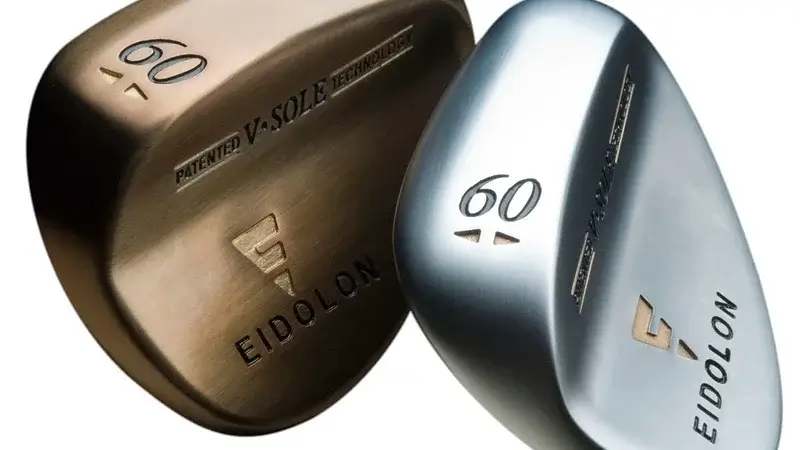
If you want to add distance to your 60 degrees wedge shot, you can do the following:
- Ensure that the ball is placed close to your back foot.
- Shift your body weight to the front leg.
- Maintain a strong grip on your golf course and ensure that the clubface is in a closed position.
In general, golfers can produce a bounce of 5 to 8 degrees with a 60-degree wedge.
Differences Between 56 vs. 60 Degree Wedges
If you’re an amateur golfer, you will be better off with a 56-degree wedge in your golf kit, as it is quite versatile.
Conversely, a 60 degrees wedge is better suited for experienced golfers. However, it does not make much sense to carry both wedges.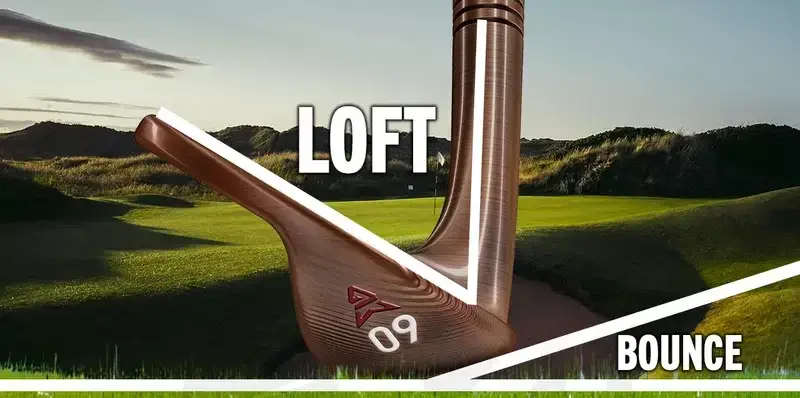
In general, your golf ball can hit a longer average distance with a 56 degrees wedge compared to a 60-degree wedge.
When you strike a golf ball with a 56-degree wedge, it can travel a distance of 80 to 95 yards. The same ball will go about 50 to 75 yards when you hit it with a 60 degrees wedge.
Since both wedges play important roles, picking between the two can get tricky. Let us look at some situations and determine which wedge is better suited to the occasion.
1. Standard Bunker Shot
A 56-degree wedge offers players plenty of distance and loft to carry the ball over the bunker’s edge and onto the greens. It enables golfers to take smaller swings but still achieves good acceleration and results.
While you could use a 60 degrees wedge in such a situation, too, it would require more time and effort to carry it to the pin.
2. Pot Bunker
Pot bunkers have very high wedges that make it challenging for the golfer to get the ball up and over the side. These shots demand a lot of loft on the club.
A 60 degrees wedge is the best choice here. However, it might take a lot of practice.
There will be times when you will not be able to go directly to the pin. Then, you will need to go out the side of the bunker and get the ball out.
3. Greenside Chip out of Thick Rough
Out of the thick rough, you need a lot of lofts. Simply stated, the more loft you have, the easier it will be for you to get the ball to fly out of the rough.
These shots typically run when they hit the green. A 60 degrees wedge is the perfect option for the greenside chip out of the thicker rough.
4. Greenside Chip from Fairway Lie
Both 56 and 60 degrees wedges work well when you are close to the green and have a shorter lie. Each of these options will offer control and spin.
5. Bunker Shot to a Close Pin
If you hit into a bunker and the pin is very close to you, you end up short-siding yourself.
In such cases, when you don’t have a lot of green to work with, a 60 degrees wedge will be quite beneficial. It will make the ball stop quickly.
6. Bunker Shot to a Far Pin
If you have a lot of Green to cover before getting to the pin, a 56 degrees wedge will be better suited.
Using a 60 degrees wedge here would mean taking a large swing. Larger swings are not required here and will not be of much help if your fundamentals are not perfect.
7. Pin in front of the Green
If the pin is in front of the Green, you might not have much room to work with.
Higher lofted wedges are a better choice in such cases so that you would be better off with a 60-degree wedge.
8. Pin in the Back of the Green
In situations when the pin is in the back of the Green, you will require a little more club to get you to the hole.
Hitting a little lower golf shot and letting it roll up to the pin will help you here. It would be best if you used a 56-degree wedge for a shot like this.
Let us address some of the most common questions that arise in regards to golf wedge distances.
What is a 48 degree wedge used for?
48 degrees wedges are one of the most frequently used wedges in golf games. In fact, almost all golf club sets include this pitching wedge.
The 48 degrees wedge is a crucial wedge for golf players and is considered an excellent pick for making long-distance shots.
Many golfers believe that it can help in both your long and short games.
What is a 52 degrees wedge used for?
A 52 degrees wedge can essentially replace a pitching wedge. It is used when the golfer wants to take higher shots but at a shorter distance.
The ball gets to a slight elevation and then falls quickly, without rolling too much.
You can use a 52 degrees wedge to hit the golf ball out of a sand bunker. The shot will largely depend on the bounce.
It is also used to hit chip shots, wherein the golfer hits the ball to a shorter distance.
What is a 56 degree wedge used for?
A 56 degrees wedge can be used for playing very fast greens. It covers a pretty wide distance and is perfect for short game-play.
It is extremely flexible, which makes it a good option for high shots when there is little working room.
Sometimes, 56 degree wedges are referred to as sand wedges. It is because the 56 degrees loft falls in the 54 to 48 degrees range specified for sand wedges.
It would help if you used a 56 degree wedge in the following cases:
1. On short-sided courses
2. To play higher chip shots onto the greens
3. Shots on the inside or just outside the bunker
4. Soft or muddy surfaces
5. Rough courses with little amounts of green
What is a 58 degrees wedge used for?
A 58 degrees wedge is used for chipping the ball high up in the air at a quick speed. It is ideally meant for shorter distances when the golfer is no more than a distance of 80 yards from the hole.
However, you might have to hit the ball quite hard if you want it to cover a good distance. You can use the 58 degrees wedge for sand shots too.
It is also a great wedge to improve your greenside spin by maintaining solid contact between the club and the ball.
The 58 degrees wedge is also suited for bunker play. You should use these wedges if you wish to play some smart chip shots from the fringes.
You can also use this wedge if you wish to use the lead edge to hit the ball at its equator. Moreover, the 58 degrees wedge is a great choice if you’re going to play on wet bunkers and firm courses with tight lies.
What is a 60 degrees wedge used for?
A 60 degrees wedge is typically used to launch the ball pretty high up in the air and land softly on the greens. It is quite useful in hitting a ball over water or sand and then stopping it on the green.
The large sole on the bottom of the wedge makes it a little tricky for beginners.
The best use for your 60 degrees wedge is in these situations:
1. You need the golf ball to stop quickly on the putting surface.
2. You’re just off the green but still in the tough.
3. You need to hit your shot over a hill, tree, or other obstacles.
Conclusion
With so many different wedges flooding the stores, you might have confused which one is the best for your requirements.
We hope our deep dive into each wedge gave you a better understanding of the distances you can hit and where you can use the wedges.
Find out what works for you and hit the golf course already!
Related Posts
Last update on 2022-04-03 at 13:20 / Affiliate links / Images from Amazon Product Advertising API
